My dog is overweight: what can I do?
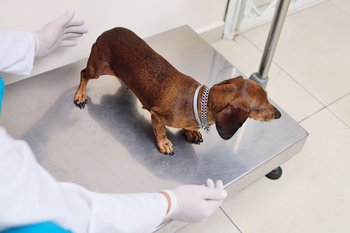
Weight management is a topic that deserves our attention. Studies show that nowadays, 40% of dogs are obese, meaning that they’re over their healthy weight by 20%.
Our consulting veterinarian, Dr. José Manuel Guay, drew inspiration from his practice to gather valuable information on the subject. Among other things, how to know if your dog is overweight? What are the risk factors and causes of overweight? What are the harmful effects on dog health? He also explains the advantages of choosing a specialized food and gives us useful tips on how to help lose the extra weight.
How do I know if my dog is overweight?
At Home Evaluation Method
You can use this simple trick to find out if your dog is overweight. Run your hands over its ribs, without applying excessive pressure. If you can feel the relief of the ribs, your dog is at a healthy weight. The feeling should be like moving your fingers over the top of your hand: you should perceive the bones. At the opposite, if you feel a good fat pad over the ribs, it’s a sign your dog is overweight.
Evaluation by the Veterinary
Your veterinarian can tell you if your dog is overweight and indicate what that ideal weight should be. Often, animals are at their healthy weight upon reaching their full growth. We can therefore use your pet’s weight at about 1 year or 18 months for giant breeds as a guide.

What are the risk factors for being overweight?
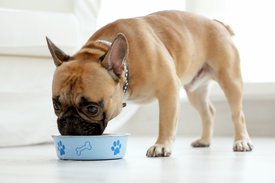
Genetic Factors
Some breeds are prone to obesity: Shetland, Golden Retriever, Beagle, Dachshund, American Cocker Spaniel, Labrador Retriever, Pug, Pekingese, Pomeranian, and Rottweiler. If your dog belongs to this group, pay attention to his weight, from the first stage of its life. Remember that it’s much easier to maintain a healthy weight than make your pet lose weight.
Sterilization and Age
Sterilization (spaying or neutering) and age are two factors that slow your pet’s basal metabolic rate, which can lead to weight gain. Nevertheless, sterilization should be prioritized because it has more benefits than drawbacks for the dog.
Several Animals in the Household
In a multi-pet household, serving the right amount of food to the right pet is often a challenge. The greedy pet may eat from the others’ bowls and increase its daily caloric intake, resulting in weight gain.
What causes overweight?
Weight gain can have many different causes from one animal to another. Here are the mostly common ones and some solutions.
A high caloric intake
To maintain a stable weight, animals must ingest the number of calories corresponding to the energy they will expend daily. This is mathematical. An overweight dog consumes too many calories versus its energy expenditure. The excess turns into fat. What can you do?
Think about how much your pet eats in a day. Free feeding your dog? Generous treat routine? Does it finish your plate or the kids’?
Make a list and try to count your dog’s total calorie intake by referring to the information on the packages. This awareness will help you see where you can reduce its daily intake and make better choices. Then adjust the portion sizes to stay within the recommended number of calories for the pet, based on its size, age and activity level.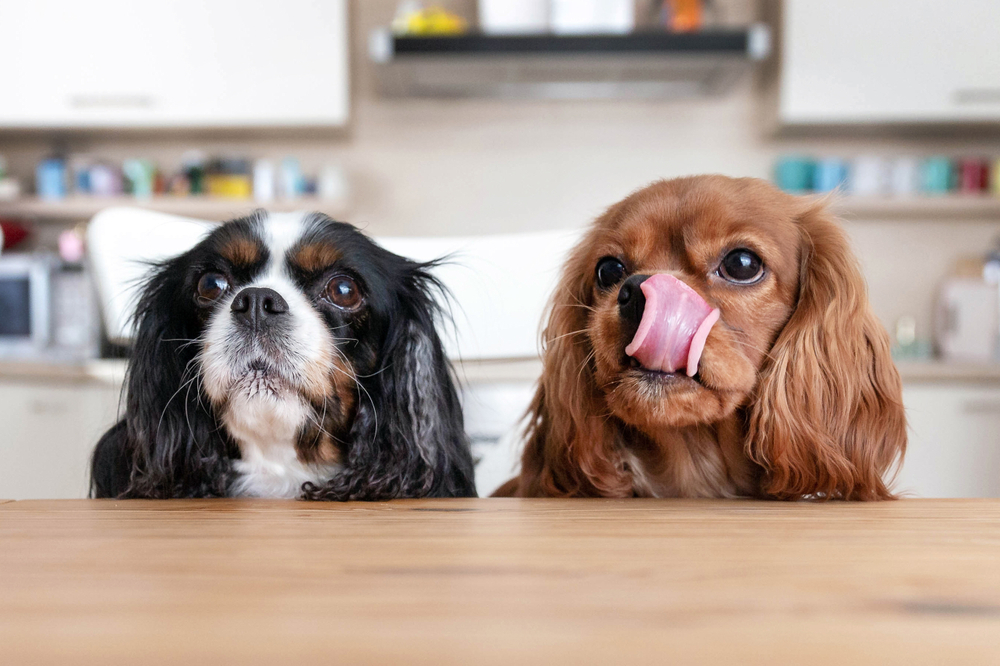
Lack of Exercise
Assess the exercise your pet gets daily. Is it a couch potato who doesn’t move much?
What can you do?
As we know, physical activity is beneficial for animals and for humans. To help your dog move more, involve it in your activities as often as possible: walking, hiking, running, etc. If you have limitations, you can take your dog to a park and throw the ball repeatedly without even moving or let your dog sprint for a while. Play is the key to success!
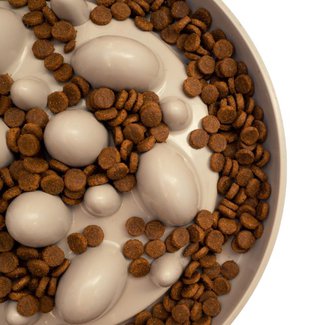
Eating Too Fast
Many overweight dogs tend to gulp their food, even swallowing kibbles whole without chewing! When eating so quickly, the brain doesn’t have time to send the satiety signal, warning them that they’ve eaten enough and should stop.
This is why they overeat. Slowing can help manage the food quantity and improve chewing and digestion.
What can you do?
You can use a slow-feeder bowl, whose shape makes access to kibbles difficult (mazes, bowls with small openings). The goal is to make the dog “work” for its food.
I also recommend food dispensing balls that randomly spills out kibbles through little holes when the dog rolls it around. This increases walking during the day while keeping the animal cognitively stimulated.
What Makes a Huge Difference: Specialized Food

When your dog has difficulty losing excess weight, I recommend choosing specially formulated food. It will help your pet feel full while lowering its caloric intake. 1st Choice Nutrition Specialized Care product line offers 2 different Weight Control formulas adapted to dog size: one for toy and small breeds, and the other for medium and large breeds.
Veterinarian’s recommendations
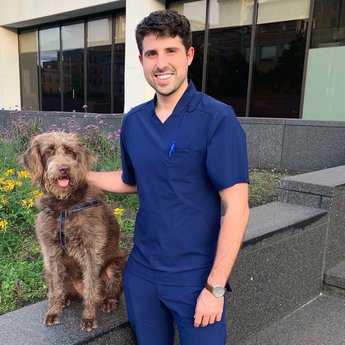
- Offering several small meals throughout the day helps maintain a feeling of fullness that prevents overeating.
- Follow the ration chart on the packaging and stick to it. Daily servings are listed according to the dog weight.
- Note that the table values refer to a pet eating kibble only. If the dog gets treats or table scraps, adjust the kibbles accordingly. If the dog is unable to go without table food, carrot pieces are a good alternative (high water and fiber content, low calorie).
- Use a measuring cup to gauge the right serving amount. For more accuracy, weigh the portions on a scale.
- Consult your veterinarian as needed to determine the ideal portion sizes for your dog. He will consider the treats and lifestyle habits when calculating the rations. He will also verify if an underlying health problem could explain the weight gain: hypothyroidism, hyperadrenocorticism, joint pain that impedes movement, etc.
- Weight loss should be slow and gradual: considered safe when the dog’s weight drops by 2% per week. When the weight is stable for 2 to 3 weeks, decrease the food slightly.
True Love is Helping your Dog Lose Excess Weight!
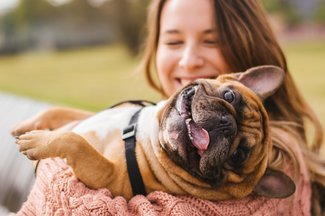
Although some dog owners think their pets are cute when chubby, obesity is detrimental to the pet health. Some effects are visible, some are silent, but all gradually affect his quality of life.
- Shortness of breath
- Decrease in interest for physical activity
- Joint pain: large breed dogs often have sensitive hips, some small breed dogs have kneecap problems
- Increase the risk of certain diseases: diabetes, skin problems, urinary problems, heart and respiratory problems, etc.
- Increase the risk of complications during interventions under general anesthesia and surgical procedures
The best gift you can give your pet is a healthy weight. According to some studies, this will even extend his life by 1 to 2 years!










